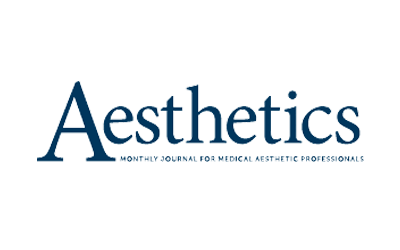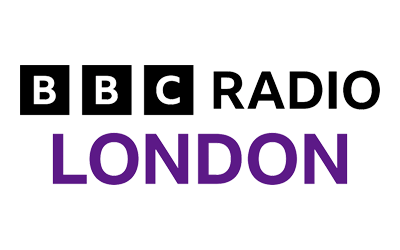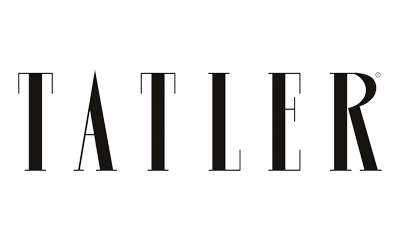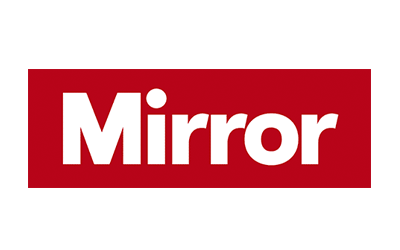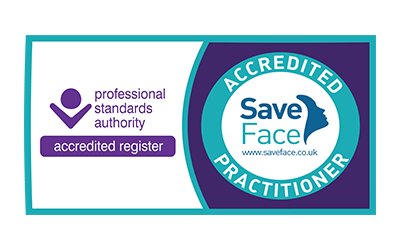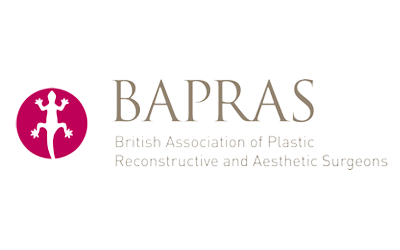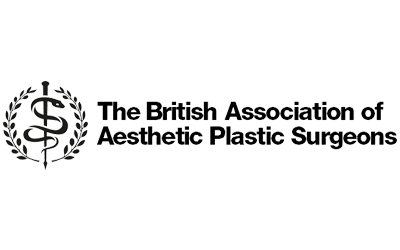A facelift is a popular procedure for reversing many of the signs of facial ageing and is often combined with an eyelid lift, brow lift or neck lift to produce optimal results. Here are some of the most frequently asked questions that Mr Karidis get asked during a facelift consultation. If you have any more questions, call 02037 335839 to speak to one of the team or arrange a consultation.
Quick Links
FAQs for Facelift Surgery (Rhytidectomy)
A facelift can reverse the appearance of ageing and dramatically soften facial contours and lines, however it must be noted that it will not erase permanent skin creases. The use of non-surgical treatments such as injectable dermal fillers, Botulinum toxin, and other skin treatments can complement and refine the results of surgery or be used to maintain top results. “A facelift sets the clock back, but does not stop it ticking” – Alex Karidis.
A very discreetly placed incision runs from the top of the ear within the hairline down over the natural crease in front and within the ear returning around behind the earlobe and up the back of the ear. The skin is then lifted; the underlying muscles tightened and blood vessels are sealed before the skin is replaced in its new position.
Any excess skin is trimmed and sealed with dissolvable stitches. On completion, a bandage dressing is then gently applied around the face in order to apply light pressure over the wound area. Mr. Karidis has modified his technique over many years in order to ensure minimal visible scarring whilst, at the same time, ensuring that the anti-ageing effects and longevity of the face lift are not compromised.
During your consultation Mr. Karidis will discuss your general medical history and assess you in order to determine your individual suitability. Issues that may cause problems with your surgery such as uncontrolled high blood pressure, blood clotting problems, or a tendency to form excessive scars may be identified and discussed.
If you are a smoker you will be asked to stop smoking well in advance of surgery as well as for a period after the operation (generally 4 weeks before and 4 weeks after). Smoking seriously constricts blood vessels, decreasing blood flow to a given area, which will result in poor healing and adverse scarring. Aspirin and other medications should also be avoided as they can cause an increase in bleeding.
Generally, the best candidates for a face lift are those who still possess good elasticity, and who are showing signs of sagging on the face and neck area and are within their normal weight limits. Most patients who seek this procedure are usually over 40 years of age, however it is not uncommon to treat younger patients who are looking to maintain a youthful appearance.
No, there are many different types of facelifts. The classical (skin only) face lift has undergone several modifications over the years to improve the overall results, and to give a longer lasting effect. These modifications not only lift the skin, but now also address the underlying structures (i.e. muscles or SMAS), which are equally subjected to the effects of the ageing process.
The SMAS face lift is one that is favoured by many competent surgeons, although there are now many variations of even this procedure. These are the extended SMAS lift, Composite face lift and Sub – periosteal face lift, Lateral SMAS lift, all of which can be tailored to suit individual needs. But the most important take home message here is that these types of operations will give you the most long lasting and most natural results of all.
As every patient is different, Mr. Karidis’ technique will take every individuals characteristics into consideration in order to give them a tailored result leading ultimately to a natural, freshened and more youthful look. In general terms however the operation involves a thorough and extensive skin layer release and elevation.
Once this is done the underlying muscles will also be lifted accordingly and repositioned depending on the individuals circumstances, to give the face a younger, more structured appearance. The muscles are lifted in a way that maintains the appropriate volumes and dimensions within the face to restore the appropriate harmony and balance to your face. Any localised excess fat will be gently suctioned away in order to augment the results of the facelift.
Once the muscles and volumes of the face are restored the skin will be carefully replaced without any tension (as this is one of the keys to great scars and natural rather than a stretched look) and any excess will be trimmed away. If there is a need for any localised fat transfer to address any hollowing not fully restored by muscle and volume repositioning then this will also be performed.
More recently there have been newer ‘mini face lift’ techniques that have been popularised to help minimise scars and generally shorten recovery times. These mini face lift treatments include MACS lift, S-lift and thread lifts and the ‘one stitch’ facelift. However, they have a much more limited spectrum of facial improvement and don’t tend to last as long as a thoroughly performed SMAS type facelift.
Of course, it’s a great deal for the surgeon – lots of repeat business – and also appeals to the natural reluctance of most patients to avoid ‘big’ surgery. However in the end it is not such a great deal for the patient, because if you keep pulling on the skin in smaller doses, before long your face will look over stretched, giving you that ‘face lift’ look.
Generally speaking, its Mr.Karidis’ opinion that ‘less’ will always be ‘less’, and the effectiveness, and longevity will always be compromised with these minimal techniques. Mini face lift techniques or surgery generally give you ‘mini’ result- simple as that.
Mr. Karidis’ advice is if you have decided to have a face lift to address any sagging aspects of your face, then you should deter from looking at the immediate short term (quick recovery and minimal swelling) because 3 or 6 months later, you will more than likely be disappointed with your decision to ‘cut corners’.
Unfortunately, a face lift is like anything else in life, if you want more out of it then you have to put more into it. Our advice is to be patient with the recovery period – to look your best and most natural over the long term it is better to have a face lift less often and more thoroughly.
If on the other hand you feel that your sagging is only minimal – and so feel you don’t want anything major, it would probably be best in this situation to have one of the non-surgical skin tightening procedures such as Ultherapy which will give you a useful improvement with no recovery and no scar whatsoever. This should tide you over nicely until your situation changes to a point where you require a ‘proper’ facelift!
It is impossible to provide a straight answer for this question, as everyone has different skin and muscle tissue quality. However the results of a properly performed facelift are generally permanent in a sense that although it will not stop the clock and stop subsequent ageing in the coming years, any improvement you get will always render you much better off than you would have been had you not had surgery.
The quality of your skin tissues will of course help to maintain the results of a face lift, so if a patient has a good amount of elasticity then the face lift will tend to last much longer than a patient who has lost a lot of elasticity. If you think of it like a rubber band – a rubber band will become brittle and less elastic. Pulling on this excessively will result in the band snapping, where as a fresher rubber band has the ability to stretch and recoil much better than one that has been weathered over time.
Another way you can look at the lasting effects of a face lift is to imagine you have an identical twin. If you were to have a face lift and your twin sister or brother did not, in ten years time you will look better than your twin. So again in that sense the effects and benefits of the facial surgery will be permanent.
After the first 2-3 weeks your face will begin to feel a lot better and significantly more comfortable with less of that ‘over tightened’ feel from the added swelling post operatively. You will also be able to comfortably turn your neck more although some tissue hardening and tightening can be experienced up to 4 months.
Conversely some patients will occasionally start to panic 4-5 months after their face lift surgery because they notice slight laxity or loosening on their face and neck. In the first few months after the initial face lift surgery, skin loosening is normal and expected – it’s just the natural settling process that occurs and contrasts with the initial tightening and swelling from the first few days after surgery.
At this stage there is no need to panic, it does not mean that your face will completely drop again, it just means that your facial muscles and skin are adjusting to the new contours of the face lift.
Although many patients will just have one facelift, it is important to remember that we cannot stop the clock and therefore your face will continue to age with time. As a result it is therefore conceivable that you may wish to have another facelift in the future. Some people choose to have further surgery seven to 15 years later.
As mentioned elsewhere, one cannot stop the clock and so the ageing process will continue after any operation. However there are many non -surgical treatments available which will enhance, improve and maintain the results of any face surgery.
Treatments such as injectable fillers, botulinum toxin, deeper medical facials, light skin chemical peels, and numerous lasers and energy devices which can greatly augment, enhance and maintain your facelift results and which are all available at our clinic, so please feel free to read about these in the relevant sections of our website and contact us accordingly.
After your operation you may feel a little drowsy from the anaesthetic and other medications. Therefore we strongly suggest that if possible, you nominate a friend or family member to collect you. Alternatively, we can assist you in booking a taxi whilst you are in hospital. Some people are interested in flying soon after surgery.
This should not be a problem however in general we recommend that for the first 4-5 days it would be best if you remain in reasonable close proximity to the clinic so that should the need arise we would be able to offer assistance and advice.
Mr. Karidis strongly believes that scars following a facelift should be as well hidden as possible to not be noticed or compromise your hairstyle. Furthermore, the aim is for them to be of as good a quality as possible therefore all his techniques revolve around this philosophy and are thus adapted to minimise scars, yet maximising the results of your surgery.
A scar will obviously form at the incision sites. These are situated from the top of the ear within the hairline and run down over the natural crease in front and within the ear returning around behind the earlobe and up the back of the ear. Sometimes it may be necessary to add an incision under the chin, however this will be discussed.
Scars are always red and slightly lumpy in the first few months following a face lift. Of course light makeup applied over the scars in the early period will help hide them. One must remember of course, it is always impossible to ultimately predict how any individual’s scar will appear. However, occasionally behind the ears, and rarely in front of them, scars of certain skin types can stretch or become lumpy.
These skin types cannot be identified prior to surgery. Often however, these can easily be hidden by longer hairstyles but may become visible if the hair is cut short or lifted. Very occasionally a small bald strip can also develop adjacent to the scar that is situated above the ear in the temple area. Generally speaking, the incision used for both men and women is the same.
The only thing that differs is the incision on men courses down in front of, rather than within the ear, and then continues, as in women, round the earlobe and up behind the ear before curving back into the hairline of the neck. However, although as mentioned scars are unpredictable, the vast majority of patients operated by Mr. Karidis do not experience problems with their scars.
As a result of careful planning and meticulous technique, Mr. Karidis aim is to preserve your ability and right to be able to put your hair up comfortably without worrying about your scars in front or behind your ears being visible, yet still maximising your results.
The key to a natural result is to replace sagging tissues back into the position they were in a few years ago. There is no point in forcibly replacing these into a position where they do not want to be or were before. This is where a surgeon’s artistry, awareness and ability all come into play.
Mr. Karidis firmly believes you must ‘read’ and ‘feel’ the face, neck and all of its structures when you are performing a facelift to understand where things need to repositioned to. This is done by ‘feeling’ the tension forces within the different layers of skin, muscle and fat and replacing these in the direction that they freely ‘want’ to glide in and sit in.
Once the underlying muscle layers have been replaced where they comfortably want to be in, they are then secured through a series of over 30-40 sutures on each side of the face and neck. Only in this way does Mr. Karidis feel that his muscle repair is sound enough to withstand the normal daily pressures subjected to ones face and neck.
Once the muscle layers have been secured the skin layer is then brought to comfortably re-drape and lie over the muscles in a tensionless fashion. This way you will not experience any dragging, pulling or other untoward stretching of the skin and the result will undoubtedly be natural.
Of course the ability to perform all this in such a fashion can only be acquired through many years of experience and repeated surgery. Thankfully Mr. Karidis has nearly 20 years of experience performing such surgery and continues to do on average 2-3 facelifts a week amongst his other surgery.
Mr. Karidis prefers to perform face lifts with a full general anaesthetic, however, this can also be performed with a local anaesthetic. This may also depend on whether you will be having extra work done to the eyes or brow area.
Generally, the longer the surgery the better it is for the patient to have a general anaesthetic, so as to avoid feeling any discomfort from lying still for a long period of time under local anaesthetic. Surgery for a face lift can take between 2-3 hours, although this takes longer when combined with additional surgery i.e. eyelid surgery.
In a word, yes. Many people opt to also have their eyelid or browlift surgery performed at the same time. This makes sense as you therefore have only one anaesthetic and one recovery period rather than have repeated operations / anaesthetics.
Moreover it is a good idea to consider other facial procedures with your facelift as this will ‘synchronise’ the whole appearance of your face as necessary. Otherwise there is also no reason to not consider other procedures such as breast or body operations however this would obviously depend on what the extent of these are and whether the time constraints of your anaesthetic will allow this.
All surgery carries some uncertainty and risk. When a face lift is performed by a qualified Plastic Surgeon, complications are infrequent and usually minor. Still, individuals vary greatly in their anatomy, their physical reactions, and their healing abilities, and the outcome is never completely predictable.
Conditions such as high blood pressure, bleeding disorders and smoking increase the chances of complications and therefore will be discussed in greater detail at the consultation.
Complications that can occur with a face lift include a haematoma (a collection of blood under the skin that must be drained by the surgeon), injury to the nerves that control facial muscles (usually temporary and less than 1% chance), infection (less than 1%), delayed wound healing, skin lumpiness, necrosis (skin loss), occasional hair loss in the temple region along the scar or distortion (usually temporary).
Risks such as leg and lung blood clots are rare. Early mobilisation by moving around as soon after the surgery as possible reduces this considerably. Mr. Karidis regularly deploys anti-clotting measures such as special stockings (TEDS) and compression devices (Flowtron) during surgery to minimise this. You can reduce your risks by closely following Mr. Karidis’ advice both before and after surgery.
You should be up and about in a day or two, but plan on taking it easy for the first week after a face lift procedure. Remember, at the beginning your face will look and feel rather strange. Your features will be distorted from the swelling, you will have some bruising and your facial movements are likely to be slightly stiff.
It’s not surprising therefore that most patients are disappointed in the first couple of weeks. However you must try to stay positive and understand that things WILL get better! From about 2-3 weeks after surgery you will likely feel confident to get out and about, though small refinements will take place over the course of 6-9 months. Most people feel happy to return to work from around 3 weeks.
Find out more about the face lift recovery timeline.
A surgeon fee, anaesthetist fee and hospital fee will be required. You will be given a breakdown of these costs on the day of your consultation.
In accordance with the National Healthcare commission guidelines, according to the last five years of annual audit figures submitted to the Hospital of St. John and St. Elizabeth in London, Mr. Karidis performed on average 120 face lift procedures per year. In the last 10 years he has performed over 900 face lift procedures.
We look forward to seeing you at the clinic around 7 and 14 days after your surgery to review your results, thoroughly clean the area and provide you with ongoing advice. Providing all is well, you will usually see Mr. Karidis at around 4 weeks post operation for a routine checkup. Further appointments can of course be made if necessary.
It is always useful to allow yourself plenty of time to recover and organise sufficient time off work as appropriate. 3 weeks should give you sufficient time to allow any obvious bruising and swelling to subside. A little make up may be required at that point to cover any remaining bruising. Ensure any blood tests or other tests that are required are undertaken well in advance to avoid any potential delays.


